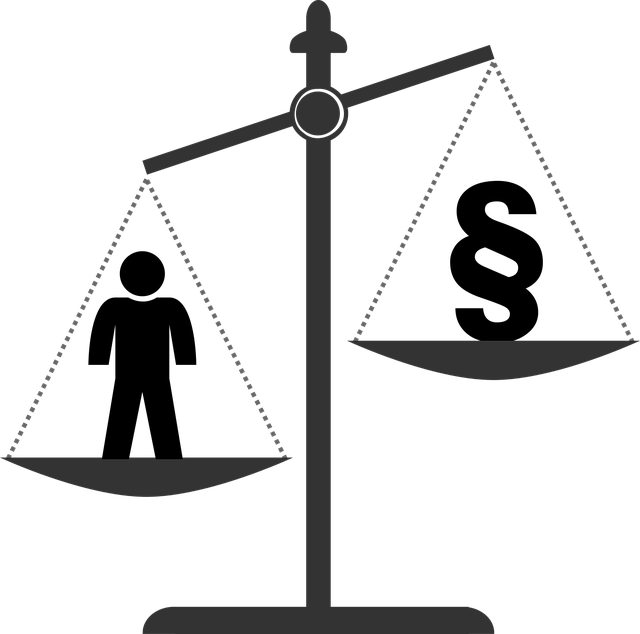Understanding consumer protection laws is essential for individuals seeking justice in financial crime cases, involving scams like investment fraud, identity theft, and fraudulent lending. To file a successful How to File a Consumer Protection Lawsuit, follow these steps: gather robust evidence (preserving receipts, contracts, online transactions), choose the correct court, file your complaint, serve the defendant, respond to their defense, exchange discovery, and either negotiate or proceed to trial. Seek legal counsel from specialized white-collar defense attorneys for strategic guidance throughout the process, ensuring a favorable outcome that protects consumers in philanthropic and political communities.
In today’s digital age, understanding consumer protection laws is more crucial than ever. Finance crime probes are on the rise, with various schemes and scams targeting unsuspecting individuals. This comprehensive guide delves into the intricacies of consumer rights, helping you identify potential financial frauds. Learn how to file a consumer protection lawsuit, from gathering evidence to choosing legal representation. With step-by-step instructions, you’ll gain the knowledge needed to protect yourself and pursue justice.
- Understanding Consumer Protection Laws and Your Rights
- Identifying Finance-Related Crimes: Common Schemes and Scams
- The Process of Filing a Lawsuit: Step-by-Step Guide
- Gathering Evidence and Supporting Documentation
- Choosing the Right Legal Representation for Your Case
Understanding Consumer Protection Laws and Your Rights
Understanding Consumer Protection Laws is a pivotal step for individuals seeking justice in cases involving financial crimes. These laws are designed to safeguard consumers from unfair, deceptive, or fraudulent practices in various transactions, including banking, investments, and credit services. Familiarizing yourself with these regulations empowers you to assert your rights and take action when wronged.
If you believe you’ve been a victim of financial crime, the first step is to gather evidence and document your experiences. This includes any contracts, correspondence, or receipts related to the transaction. Subsequently, you can initiate a conversation with the relevant regulatory bodies or consult a legal professional who specializes in consumer protection lawsuits. Remember, achieving extraordinary results in these cases often requires persistence and a thorough understanding of your rights under these laws, which could potentially lead to winning challenging defense verdicts.
Identifying Finance-Related Crimes: Common Schemes and Scams
Identifying finance-related crimes is a complex task that requires vigilance and knowledge. Common schemes often involve deception and manipulation, taking various forms such as investment scams, identity theft, or fraudulent lending practices. Scammers target individuals and businesses alike, preying on their trust and financial vulnerabilities. For instance, phishing attempts trick victims into revealing personal information or transferring funds to fake accounts. Another prevalent scam is the Ponzi scheme, where investors are promised high returns with little risk, but their money ultimately fuels operations for previous investors.
Understanding these tactics is crucial when considering how to file a consumer protection lawsuit. If you’ve fallen victim to such crimes, seeking legal counsel is essential. Attorneys specializing in financial crime can guide clients through the process, helping them achieve extraordinary results and ensure justice. By staying informed about common scams and knowing your rights, individuals can protect themselves and contribute to maintaining integrity within the philanthropic and political communities, as well as their own financial security.
The Process of Filing a Lawsuit: Step-by-Step Guide
Filing a lawsuit under consumer protection laws is a crucial step for individuals who’ve fallen victim to financial crime, such as white-collar and economic offenses. The process can be intricate but understanding the steps involved can significantly increase your chances of achieving a favorable outcome, including the complete dismissal of all charges.
Here’s a step-by-step guide on how to file a consumer protection lawsuit:
1. Gather Evidence: Collect all relevant documents, records, and any proof that supports your case. This could include contracts, financial statements, communication with the defendant, and any other materials demonstrating the violation of consumer rights.
2. Choose the Correct Court: Depending on the jurisdiction and the nature of the crime, you’ll need to file in either a state or federal court. Research the venue rules carefully to ensure the case is filed in the right place for optimal chances of success.
3. File the Lawsuit: Prepare and submit your complaint, which should clearly outline the facts of the case, the consumer protection laws violated, and the requested relief. Ensure you meet all filing deadlines and pay the required fees.
4. Serve the Defendant: Once filed, a copy of the lawsuit must be served to the defendant within a specified time frame. This can usually be done through a process server or by following the court’s designated procedures for service of process.
5. Respond to a Defense: The defendant will have an opportunity to respond and file their own legal arguments, known as an answer. Review this document carefully as it may include defenses that could impact your case.
6. Exchange Discovery: This is a critical phase where both parties share relevant information and documents. It’s important to ensure you receive all evidence that could be used against you, and also provide any additional proof supporting your case.
7. Negotiate or Proceed to Trial: Depending on the circumstances, you may attempt to resolve the matter through settlement negotiations with the defendant. If these fail, the case will proceed to a trial where a judge or jury will evaluate the evidence and determine the outcome, potentially resulting in a winning challenging defense verdict.
Gathering Evidence and Supporting Documentation
When embarking on a How to File a Consumer Protection Lawsuit, gathering robust evidence is paramount. This includes meticulously documenting every interaction with the offending entity, from initial marketing or sales contact to subsequent communications regarding returns, refunds, or dispute resolution. Receipts, contracts, online transaction records, and any correspondence exchanged are crucial pieces of the puzzle. Additionally, collecting statements from affected consumers who share similar experiences can strengthen the case, demonstrating a pattern of deceptive practices.
A strategic approach to evidence collection involves organizing and labeling documents effectively for easy reference during the legal process. Engaging in proactive measures, such as consulting with financial experts and white collar defense specialists, can aid in uncovering hidden assets or complex financial schemes. This comprehensive strategy not only strengthens the case but also increases the likelihood of achieving winning challenging defense verdicts, ultimately protecting the rights of consumers within the philanthropic and political communities.
Choosing the Right Legal Representation for Your Case
Choosing the right legal representation is a crucial step when navigating complex financial crime investigations and subsequent lawsuits, such as those involving consumer protection. When considering a case like this, it’s essential to find an attorney who specialises in white-collar defence strategies. This ensures your lawyer has the expertise to guide you through all stages of the investigative and enforcement process.
Look for legal counsel with experience handling high-stakes financial cases and a proven track record of success. Their knowledge of consumer protection laws and regulations will be invaluable when filing a lawsuit, ensuring your case is built robustly and ethically. Such specialists can offer strategic advice tailored to your situation, representing you effectively in negotiations or courtroom battles.
Understanding consumer protection laws is your first step towards defending your financial rights. By familiarizing yourself with common finance-related crimes and scams, you can recognize and report suspicious activities. If you’ve been a victim of such crimes, our comprehensive guide on how to file a consumer protection lawsuit outlines the necessary steps, from gathering evidence to choosing legal representation. Armed with knowledge, you can navigate this process effectively and seek justice.






